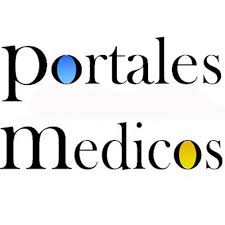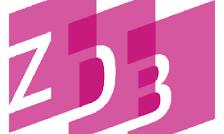Hallazgos en el electroencefalograma digital de los trastornos del espectro autista. Mérida, Venezuela. 2020-2021
Findings in digital electroencephalogram of patients with autistic spectrum disorder. Mérida, Venezuela. 2020-2021
Resumen
Introducción: el trastorno del espectro autista (TEA) se caracteriza por la triada de Wing, alteración en la comunicación, interacción social y flexibilidad e imaginación (OMS, 2019, Uzcátegui y Moreno, 2021). Objetivo: describir los principales hallazgos de los electroencefalogramas (EEG) digitales de los TEA que acudieron a la consulta de neuropediatría en diferentes instituciones sanitarias de Mérida-Venezuela durante el año 2020-2021. Metodología: se realizó un estudio de tipo cuantitativo, descriptivo y transversal. La muestra estuvo conformada por 109 sujetos mayores de 2 años y menores de 16 años que presentaban clínica de TEA. Resultados: la anormalidad que fue más frecuentemente encontrada fueron los paroxismos focales 32 (70%) específicos 31 (68,88%) bilaterales 19 (42,22%). Los EEG digitales son una herramienta fundamental al momento de valorar la actividad bioeléctrica cerebral en los TEA, aunque no existe un patrón único asociado a estos, se observan cambios variables dependiendo de la variabilidad del espectro. Conclusión: entre los hallazgos del EEG digital más frecuente en los TEA se encuentra relacionada con la actividad epileptiforme, no constituyendo un patrón único, dependiendo de muchos factores, entre estos la edad y la variabilidad en el espectro de TEA que presente el niño.
Introduction: autism spectrum disorder (ASD) is characterized by Wing's triad, impaired communication, social interaction, and flexibility and imagination (WHO, 2019, Uzcátegui and Moreno, 2021). Objective: describe the main findings of the digital electroencephalograms (EEG) of the ASD who attended the neuropediatrics consultation in different health institutions of Mérida-Venezuela during the year 2020-2021. Methodology: a quantitative, descriptive and cross-sectional study was carried out. The sample consisted of 109 subjects older than 2 years and younger than 16 years who presented clinical symptoms of ASD. Results: the most frequently found abnormality was focal paroxysms 32 (70%) specific 31 (68.88%) bilateral 19 (42.22%). Digital EEGs are a fundamental tool when assessing brain bioelectric activity in ASDs, although there is no single pattern associated with these, variable changes are observed depending on the variability of the spectrum. Conclusion: among the most frequent digital EEG findings in ASD, it is related to epileptiform activity, not constituting a single pattern, depending on many factors, including age and variability in the spectrum of ASD that the child presents.
Palabras clave
Referencias
Asociación Americana de Psiquiatría. (2013). Manual diagnóstico y estadístico de los trastornos mentales (DSM-5®). Estados Unidos: Ed. Arlington.
Asociación Médica Mundial. (17 de febrero 2022). Declaración de Helsinki de La AMM – Principios éticos para las investigaciones médicas en seres humanos. https://www.wma.net/es/policies-post/declaracion-de-helsinki-de-la-amm-principios-eticos-para-las-investigaciones-medicas-en-seres-humanos/
Barthélémy, C., Fuentes, J., Howlin, P. y Rutger, G. (2019). Personas con Trastorno del Espectro del autismo. Identificación, compresión, intervención. Donostia / San Sebastián, España: Autismo Europe.
Borges, J., Filomena, M., Faoro, A. y Pérez, E. (1985). Electroencefalografía clínica: Patrones y Terminología. Caracas, Venezuela: Ediciones de la biblioteca de la Universidad Central de Venezuela.
Bruni, O., Ferri, R., Vittori, E., Novelli, L., Vignati, M., Porfirio, M., Debora, A., Bernabei, P. y Paolo, C. (2007). Sleep architecture and NREM alterations in children and adolescents with Asperger syndrome. Sleep, 30,1577-1585.
Capal, J., Carosella, C., Corbin, E., Horn P., Caine, R. y Manning, P. (2018). EEG endophenotypes in autism spectrum disorder. Epilepsy Behav, 88, 341-348.doi: 10.1016/j.yebeh.2018.09.036.
Cantor, D., Thatcher, R., Hrybyk, M. y Kaye, H. (1986). Computerized EEG analyses of autistic children. J. Autism. Dev. Disord., 16,169-87.
Chez, M., Chang, M., Krasne, V., Coughlan, C., Kominsky, M. y Schwarts, A. (2006). Frequency of epileptiform EEG abnormalities in a sequential screening of autistic patients with no known clinical epilepsy from 1996 to 2005. Epilepsy. Behav., 8, 267-271.
Centro de Investigación Biomédica En Red de Salud Mental (CIBERSAM). (2014). Manual diagnóstico y estadístico de los trastornos mentales. España: Editorial Médica Panamericana.
Dawson, G., Klinger, L., Panagiotides, H., Lewy, A. y Castelloe, P. (1995). Subgroups of autistic children based on social behavior display distinct patterns of brain activity. J. Abnorm. Child. Psychol.; 23, 569-583.
García, J. (2009). Autismo, epilepsia y patología del lóbulo temporal. Rev. Neurol., 48 (Supl 2), S35-45.
Goldman, E., Surdyka, K., Cuevas, R., Adkins, K., Wang, L. y Malow, B. (2009). Defining the sleep phenotype in children with autism. Dev. Neuropsychol., 34, 560-573.
Hara, H. (2007). Autism and epilepsy: a retrospective follow-up study. Brain. Dev., 29, 486-490.
Hering, E., Epstein, R., Elroy, S., Iancu, D. y Zelnik, N. (1999). Sleep patterns in autistic children. J. Autism. Dev. Disord.; 29, 143-147.
Hrdlicka, M. (2008). EEG abnormalities, epilepsy and regression in autism: a review. Neuro. Endocrinol. Lett.; 29, 405-409.
Hughes, J. y Melyn, M. (2005). EEG and seizures in autistic children and adolescents: further findings with therapeutic implications. Clin. EEG. Neurosci., 36, 15-20.
Kawasaki, Y., Shinomiya, M., Takayanagi, M. y Niwa, S. (2010). Paroxysmal EEG abnormalities and epilepsy in pervasive developmental disorders: follow-up study until adolescence and beyond. Brain. Dev., 32, 769-775.
Kellaway, P. (2003). Orderly Approach to Visual Analysis: Elements of the Normal EEG and Their Characteristics in Children and Adults. En: Ebersole, J. y Pedley, T. (3ra ED) (2003). Current Practice of Clinical Electroencephalography. Baltimore, EEUU: Ediciones Williams, & Wilkins, 100-159.
Kim, H., Donnelly, J., Tournay, A., Book, T. y Filipek, P. (2006). Absence of seizures despite high prevalence of epileptiform EEG abnormalities in children with autism monitored in a tertiary care center. Epilepsia, 47, 394-398.
Limoges, E., Mottron, L., Bolduc, C., Berthiaume, C. y Godbout, R. (2005). Atypical sleep architecture and the autism phenotype. Brain, 128, 1049-1061.
Miano, S., Bruni, O., Elia, M., Trovato, A., Smerieri, A., Verrillo, E., Roccella, M., Terzano, M. y Ferriy, R. (2007). Sleep in children with autistic spectrum disorder: a questionnaire and polysomnographic study. Sleep. Med., 9, 64-70.
Morillo, L. (1ra ED) (2005). Análisis visual del Electroencefalograma. En: Guía Neurológica 7: Neurofisiología. Neuro Eledtro Diagnóstico. Bogotá, Colombia. http://acnweb.org/pub/guia_7.htm
Nicotera, A., Hagerman, R., Catania, M., Buono, S., Di Nuovo, S., Liprino, E., Stracuzzi, E., Giusto, S., Di Vita, D. y Musumeci, S. (2019). EEG Abnormalities as a Neurophysiological Biomarker of Severity in Autism Spectrum Disorder: A Pilot Cohort Study. J Autism Dev Disord., 49, 2337–2347. doi.org/10.1007/s10803-019-03908-2.
Niedermeyer, E. y Lopes da Silva, F. (4ta ED) (1999). Electroencephalography. Basic principles, clinical applications and related fields. Baltimore, EEUU: Ediciones Lippincott Williams & Wilkins.
Olsson, I., Steffenburg, S. y Gillberg, C. (1988). Epilepsy in autism and autistic-like conditions: a population-based study. Arch. Neurol.; 45, 664-8.
O’Reilly, C., Lewis, J. y Elsabbagh, M. (2017). Is functional brain connectivity atypical in autism? A systematic review of EEG and MEG studies. PLoS ONE 12(5). doi.org/10.1371/journal.pone.0175870.
Parisi, L., Messina, G., Ruberto, M., Santoro, C., Precenzano, F., Lanzara, V., Bitetti, L., Pastorino, G., Risoleo, M., Operto, F., Marotta, R., Santoro, C., Vetri, L., Marotta, R., Precenzano, F., Parisi, L., Lanzara, V. y Vetri, L. (2020). Electroencephalographic Abnormalities in Autism Spectrum Disorder: Characteristics and Therapeutic Implications. Medicina, 56:419.
Palau-Baduell, M., Valls-Santasusana, A., Salvadó-Salvadó, B. y Clofent-Torrentó, M. (2013). Aportación del electroencefalograma en el autismo. Rev. Neurol., 56(Supl 1): S35-S43. https://institutoincia.es/wp-content/uploads/2013/04/Aportacion-del-electroencefalograma-en-el-autismo-Rev-Neurol-2013.pdf
Parmeggiani, A., Posar, A., Antolini, C., Scaduto, M. Santucci, M. y Giovanardi, R. (2007) Epilepsy in patients with pervasive developmental disorder not otherwise specified. J. Child. Neurol., 22, 1198-1203.
Parmeggiani, A., Barcia, G., Posar, A., Raimondi, E., Santucci, M. y Scaduto, M. (2010). Epilepsy and EEG paroxysmal abnormalities in autism spectrum disorders. Brain & Development, 32, 783–789.
Sharma, V., Saini, A., Malhi, P. y Pratibha, S. (2021). Epilepsy and EEG Abnormalities in Children with Autism Spectrum Disorders. Indian J Pediatr. doi.org/10.1007/s12098-021-03928-w
Shou, G., Mosconi, M., Ethridge, L., Mosconi, M., Takarae, Y. y Sweeney, J. (2018). Resting-state Gamma-band EEG Abnormalities in Autism. Annu. Int. Conf. IEEE. Eng. Med. Biol. Soc., 1915-1918. doi: 10.1109/EMBC.2018.8512718.
Uzcátegui, A. y Moreno, Y. (2021). Caracterización clínica de los trastornos del espectro Autista (TEA) en el Estado Mérida-Venezuela. Marzo 2020-febrero 2021. Archivos Venezolanos de Puericultura y Pediatría. 85, 50-56
Uzcátegui, A. y Moreno, Y. (2021). Comorbilidad de los Trastornos del Espectro Autista. Mérida-Venezuela. 2020-2021. GICOS. 6(4), 215-219.
Yasuhara, A. (2010). Correlation between EEG abnormalities and symptoms of autism spectrum disorder (ASD). Brain. Dev., 32, 791-798.
Enlaces refback
- No hay ningún enlace refback.
Depósito Legal Electrónico: ME2016000090
ISSN Electrónico: 2610-797X
DOI: https://doi.org/10.53766/GICOS
| Se encuentra actualmente registrada y aceptada en las siguientes base de datos, directorios e índices: | |||
 | |||
 |  |  |  |
 |  | ||
 |  |  |  |
 |  |  |  |
 |  |  |  |
 |  |  |  |
![]()
Todos los documentos publicados en esta revista se distribuyen bajo una
Licencia Creative Commons Atribución -No Comercial- Compartir Igual 4.0 Internacional.
Por lo que el envío, procesamiento y publicación de artículos en la revista es totalmente gratuito.

